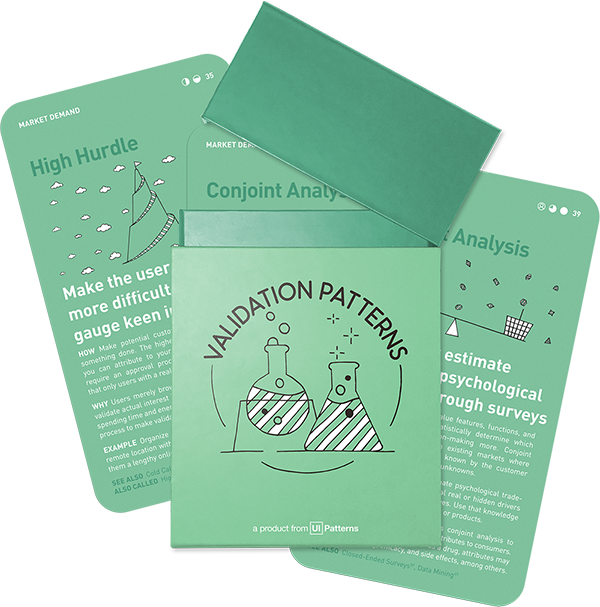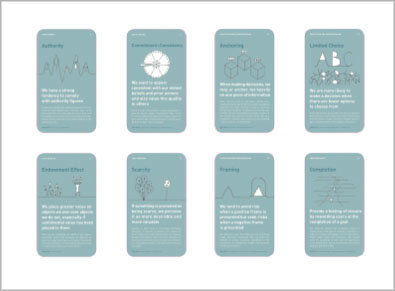Sell before you Build
Prove real demand with paying customers before you write a line of code.
Test ideas fast with the Validation Patterns printed card deck
60 proven product experiments to validate your ideas in days, not months. Used by product teams at Google, Facebook, and Amazon.
Get your deck!Most teams still start their product journey with the same three-step script:
- Hire a team
- Build the product
- Sell, sell, sell
Putting the largest cost ahead of the largest risk is why “no market need” remains the top reason that 42 percent of startups shut down.
A safer sequence flips those steps:
- Build a landing page
- Sell, sell, sell
- Hire a team
- Build the product
When demand is proved first, the later expenses serve a known market instead of a hopeful one.

The story of Buffer makes the point clear. Founder Joel Gascoigne wanted to know whether anyone would pay to schedule tweets, so he launched a two-page site: page one promised the benefit, page two showed prices. Visitors who clicked “plans” left an email; many said they were ready to pay as soon as the service existed. Seven weeks later, the first customers started paying, and only then did the coding ramp up.
The lesson from Buffer is simple: the first deliverable is evidence. A landing page with a real price tag tells you, in hours, what months of engineering cannot. The same logic powered Zappos in 1999. Before investing in warehouses, Nick Swinmurn photographed local shoe stock, posted the photos online, and bought a pair only when someone paid. Orders came in, confirming that people would buy shoes on the internet long before the company owned any inventory.
Teams that skip this step often end up performing “validation theatre.” They run broad surveys, collect friendly feedback, and celebrate social likes. None of these signals touch willingness to pay. Authentic validation asks for something tangible—an email tied to a price, credit-card details charged later, or time on a calendar for a real walkthrough. Anything less keeps the core risk hidden.
If you need quick proof, a fake-door test works well. Place a call-to-action for a feature that does not yet exist; when prospects click, record the intent and invite them to join a wait-list. Ethical wording like “coming soon, leave your email to be first in line” keeps trust intact while you measure demand in days instead of quarters.
The same approach rescues teams that already have a product but no traction. Strip the story back to one promise, set up a fresh landing page, and drive targeted traffic. If conversion is low in this controlled setting, you have learned that the offer or the audience needs to change, not that you must add more features.
Selling the promise before building the product moves risk to the front, where it is cheap to address and fast to learn from. It is the most direct path to finding early customers and steering toward product-market fit.
- The Top 12 Reasons Startups Fail by CB Insights at CB Insights
- Buffer: An Idea to Paying Customers in 7 Weeks by Gascoigne, Joel at Buffer
- Delivering Happiness: A Path to Profits, Passion, and Purpose by Tony Hsieh at Business Plus
- Fake-Door Testing: What It Is and How to Use It by Anders Toxboe at Learning Loop

